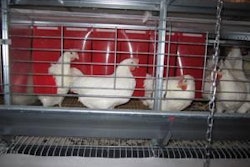Having passed 6 billion in 1999, the total number of people on the planet will probably reach 7 billion in 2011. Approximately 60% of them live in the countries of the Asia-Pacific zone. Africa holds 15%, Europe 11%, Latin America 9% and North America 5%.
The trends in world population expected to 2050 are illustrated by chart 1. The percentage changes forecast for each region until 2019 are shown in chart 2. See table 1 for the likely population sizes by region in 2020 and 2050, while table 2 adapts indications from an analysis by the United Nations on prospects for world population growth, as reviewed in an Organisation for Economic Co-operation and Development publication, to highlight that the regions’ rates of change will probably differ quite markedly over the coming two decades.
Both of the world’s two most populous countries are said to be in line for a slowdown in their population annual average growth rate. For China, the growth rate is expected to slow from 0.65% in 2000-2010 to 0.55% in 2011-2020 and for India, from 1.51% to 1.17% over the same periods.
But no less significant for the food market, including poultry products, is the change in lifestyles indicated by the latest statistics. These suggest that, for the first time, half the world’s total population resides in towns and cities. It will greatly affect the uptake of all foods because urban dwellers tend to have more disposable income and make different food choices than people in the countryside.
An example from the viewpoint of the chicken sector is that an urban population tends to buy more processed products from multiple-store retailers, whereas their rural counterparts source locally and consume mainly fresh meat. Overall, according to the Food and Agriculture Organization of the United Nations, people in urban areas spend an average of 30% more on food compared with rural inhabitants (see example from China in chart 3).
The increasing urbanisation of the population has been an especially Asian phenomenon. See from table 3 that three-quarters of the people living in the Latin American/Caribbean, North American and European regions were already urban residents some 20 years ago. The increase in Asia has made an important difference, not least in China where the urban share of the population is now around 47%.
Other individual countries named as recording the fastest rates of urban growth include India, Indonesia, Brazil, the Philippines, Mexico and Turkey.
Based on current trends, the world will have a human population of 8 billion by 2025. Over half of them will be in the Asia-Pacific territory. India is projected to have passed China for national population size by that time, with 1.65 billion people in 2025 compared with China’s 1.41 billion (see table 4). By 2050 the population of the USA is projected to have grown to 420 million, ahead of Indonesia at almost 300 million and Brazil at 260 million. The expectation for the EU-27 area of Europe is that population will increase from 500 million in 2011 to 515 million in 2050.

















